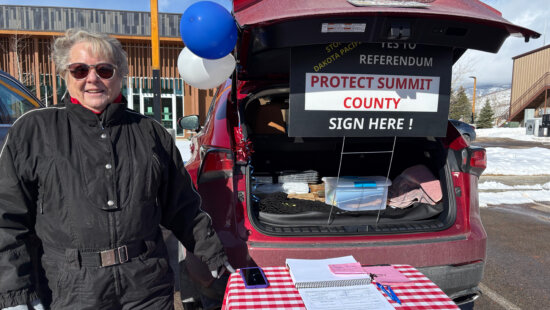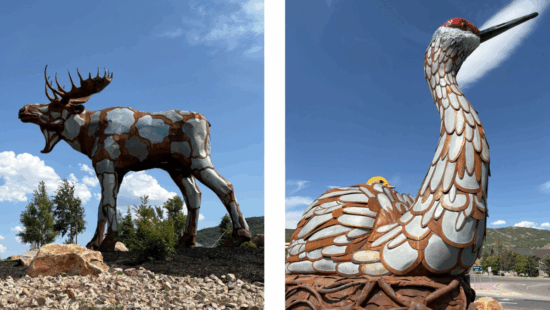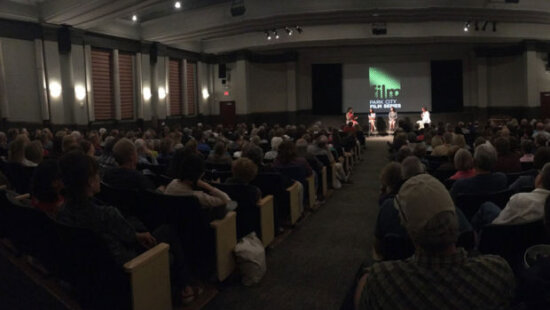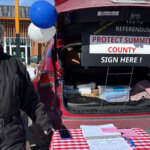Sponsored
Incumbent Mayor Andy Beerman Talks Goals for a Second Term
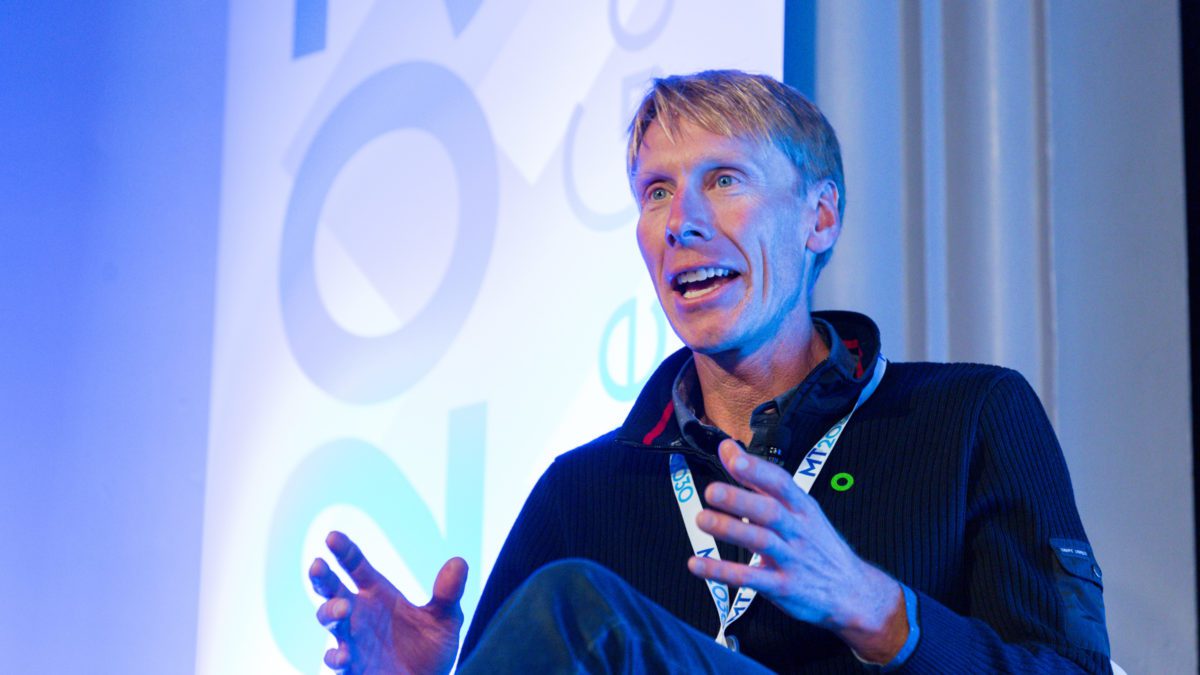
Incumbent Mayor Andy Beerman at Mountain Towns 2030 speaks on leading through action to preserve mountain towns across the nation. Photo: courtesy Mayor Andy Beerman.
PARK CITY, Utah. – In this Q+A, the incumbent Mayor and mayoral candidate Andy Beerman speaks about his background and time in Park City and current goals for a second term.
Originally from Columbus, Beerman came to Utah in 1991 while working as a National Outdoor Leadership School guide. A few years later, in 1995, Beerman was recruited by Charlie Sturgis and moved to Park City to work at White Pine Touring.
Next, he moved up Main Street to co-manage Treasure Mountain Inn, where he met his wife, the other co-manager Thea Leonard. A few years later, the newlyweds bought a controlling interest of the Inn and created one of the first eco-friendly hotels in the West.
As business started flourishing, Beerman found more time to directly engage with the community. He became president of the Historic Park City Alliance and in the role became deeply involved in Park City matters.
Beerman was often working with the City in his dealings with the Business Alliance, and when a City Council seat opened he decided to run. In 2012 he was elected to join the Council where he served six years. Midway through his second term, in 2017, Beerman was elected mayor. In his spare time, he enjoys Nordic skiing, skiing, biking, climbing, and photography.
What was your experience and reflection on the COVID pandemic?
The pandemic was a massive shock to our community. It was unlike anything we’ve ever seen: a health, economic, and social crisis. There was no playbook for an event like this, so we took a measured, collaborative response that put public health above all else. Eighteen months later, the recovery has been remarkable. I’m proud of our community response and the generosity that kept us afloat. While the Summit County Health Department led on public health, the City focused on relief, communications, and stabilizing the economy. The City immediately went into ‘recession mode’ and diverted funds to support the community. We worked closely with our local businesses to provide information, protective gear, and small grants. When we re-opened, we tried new things like car-free Main Street Sundays and loosening restrictions for outdoor dining, signage, etc. We also had to quickly re-imagine our communications to take them fully digital. Residents had a strong desire for information and a connection, so we offered three digital roundtables each week, with one in Spanish. I have some strange memories of sitting alone at City Hall and broadcasting to an empty room. Those were wild times. It gave us all a new appreciation for where we live, our access to the outdoors, the excellent local health care, and our caring neighbors. No wonder everyone wants to move here.
How do you plan to focus on growth and the ever-increasing traffic that faces locals?
Growth has long been the top concern for Park City, and our residents have had it with relentless construction. Over the past three decades, protecting Open Space has been our greatest tool to slow growth. Since I’ve been in office, we’ve received more than 3,000 acres, including Treasure Hill, Armstrong Pastures, Bonanza Flat, Clark Ranch, Stone Ridge. Now that we’re running out of land, future pressures will be external; therefore, we must work with our neighbors to plan as a region. Challenges like traffic, water, housing, and workforce do not limit themselves to lines on a map. The City and County have plans to develop large Park N Rides on the edge of town to collect day-users and zip them through our entry coordinators with dedicated bus lanes. We hope to implement micro-transit and improve walkability with new tunnels, paths, and bike lanes for our neighborhoods. As far as events, I’m advocating for a reduction of the overall number of event days. Ideally, we’d have one weekend each month with no events and even longer breaks during the off-seasons. This would go a long way to giving locals a chance to catch their breath and enjoy their town.
Where do we stand with climate preservation, and is there more to do?
As a longtime climate activist, I was thrilled in 2015 when Park City residents demanded City Council take more aggressive action on climate. This demand led Council to set one of North America’s most aggressive climate goals: net zero carbon and 100% renewable energy by 2030. Four years later, I was part of a coalition that successfully passed HB411, trailblazing bi-partisan legislation to accelerate Utah’s transition to renewable energy. Just this week, we celebrated the groundbreaking for the Elektron 80MW solar farm to power our municipal energy needs. Meanwhile, the City is electrifying our vehicle fleet and transit, increasing building efficiencies, setting goals for zero waste, and exploring soils sequestration projects. All of this is exciting but just a drop in the global bucket. That is why a big piece of our work is to prove what is possible and use it to inspire other communities. In 2019, Park City hosted the first Mountain Towns 2030 conference that drew resort communities from across the Western US. After three days of meeting and sharing ideas, several found the ‘collective courage’ to set similar climate goals. On top of this, we have inspired much larger communities like Los Angeles to purchase electric buses, Denver to explore new utility models, and nearly 20 other communities to set a goal of 100% renewable energy by 2030. Park City can be proud of what we’ve done, but I hope we’re just getting started.
How are our regional relationships within the state, and how do they affect Park City?
Strong regional relationships are critical because none of our major challenges stop at the White Barn: not traffic, not housing, and not climate. I have prioritized regional relationships since I was a new Councilmember, and I’m glad I did. As Mayor, you need to be an ambassador for Park City. The state Legislature views Park City as ‘different,’ so it takes a lot of time to build relationships and trust. And you need allies at the Capital. Without the support of other Utah cities, we would not have passed our renewable energy bill, we would not have protected our plastic bag ban, and we would never have blocked Hideout’s predatory annexation. I’m an eight-year member of the Utah League of Cities and Towns Board, a Commissioner for the Utah Quality Growth Commission, Co-Chair of the Olympic Host Venues Committee, and serve on three regional planning boards. My list of regional endorsements is long and spans up to Congress, with the support of two current Congressmen and a former Congressman. These relationships are critical in being an effective mayor.
If re-elected, what is a new issue you plan to address, and what topic will you continue to focus on?
I learned many lessons and have many ideas for a second term, but my focus will be on moving the Vision 2020 forward. This year-long planning exercise laid out the community priorities and agenda for the next decade. The pandemic slowed us down, but it’s time to ramp up and start turning this vision into a plan, and the plan, into reality. This requires bold work on traffic, housing, equity, and climate. I’m also eager to explore the concept of sustainable tourism. Park City has lost its balance between the economy and our community, and residents feel frustrated and displaced. We need to restore that balance by putting locals first in our decision-making. I want to see us better manage our crowds and congestion and more vigilantly protect our neighborhoods. There are many good ideas on how to do this, but it begins with putting locals first.
More information on stances, accomplishments, and goals can be found on ParkCityAndy.com.















